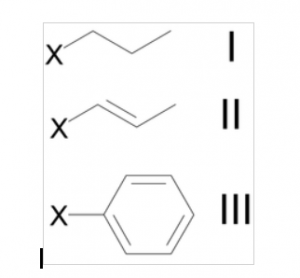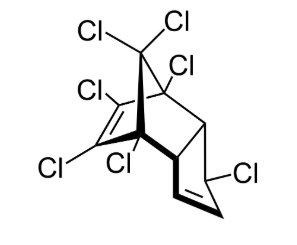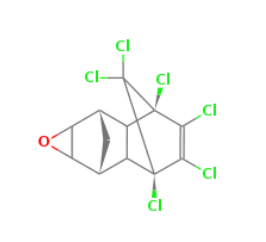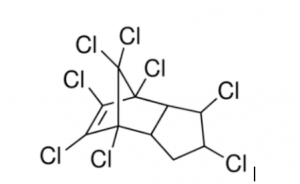What are Chlorohydrocarbons:
Chlorohydrocarbons is a group of organic compounds with at least one covalently bonded chlorine atom. Chlorinated hydrocarbons are often not readily degradable. Due to their persistence and lipophilicity they tend to enrich in organisms and in the food web. Because of these properties many chlorinated hydrocarbons are members of the so called “dirty dozen”, a group of 12 persistent organic pollutants (POPs) which have been banned or their uses restricted by the Stockholm Convention 2004

What happens to the environment because of chlorohydrocarbons in the theme of Silent Spring
Carson refers to the chemicals and pesticides she describes in the book as “biocides” or “life-killers”. She specifically talks about Chlordane, Heptachlor, Dieldrin, and Aldrin. All of these are used on crops and are in the same family as DDT. Each of these chemicals build up in the food chain rather than die off, causing these chemicals to become more toxic than DDT. These chlorohydrocarbons have been shown to cause seizures, sterility, and death. She writes about a study involving a robin. The robin returns after winter, marking the end. They eat the earthworms, and when these chlorohydrocarbons are sprayed, end up negatively affecting the robin with the effects listed before.
Chlordane:
Chemical used as a pesticide from 1948 to 1988. Technically chlordane is not a chemical, but a mixture of pure chlordance mixed with many related chemicals. Chlordan is a thick liquid. Can have either an irritating or mild smell. Chlordane can stay in the soil for approximately 20 years. Does not dissolve in water easily. Builds up in the tissue of animals
https://www.atsdr.cdc.gov/toxfaqs/tf.asp?id=354&tid=62
Heptachlor

Inhalation of heptachlor can cause nervous system side effects.Chronic inhalation of heptachlor has been linked to side effects such as blood effects in humans.Ingesting heptachlor causes side effects such as nausea and vomiting. Chronic oral exposure has resulted in neurological effects including irritability, salivation, dizziness, muscle tremors, and convulsion. Animal studies have reported effects on the liver, kidney, and the immune and nervous systems from oral exposure to heptachlor.
https://www.epa.gov/sites/production/files/2016-09/documents/heptachlor.pdf
Dieldrin:

Dieldrin entered the environment when farmers used these compounds to kill pests on crops and when exterminators used them to kill termites. Dieldrin sticks to soil and may stay there unchanged for many years. Plants can take up dieldrin from the soil and store it in their leaves and roots. Fish or animals that eat dieldrin-contaminated materials store a large amount of the dieldrin in their fat. Contaminated foods might include fish or shellfish from contaminated lakes or streams, root crops, dairy products, and meats. Exposure to dieldrin also occurs when you drink water, breathe air, or come into contact with contaminated soil at hazardous waste sites. Skin contact and breathing of dieldrin by workers who used these chemicals to kill insects were at one time common.
Aldrin
Aldrin is a highly toxic chemical that is very similar to Dieldrin. They are tied together because aldrin quickly breaks down to dieldrin in the body and in the environment. Pure aldrin and dieldrin are white powders with a mild chemical odor. The less pure commercial powders have a tan color. In the 1950s until 1970, aldrin and dieldrin were widely used pesticides for crops like corn and cotton. Because of concerns to the environment and potentially to human health, EPA banned all uses of aldrin and dieldrin in 1974.
By: Makayla Herzig, Hannah Asplund, Maranda Brei, Julie Kruger, Robyn Chrouser


